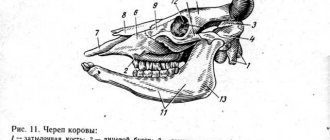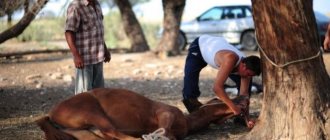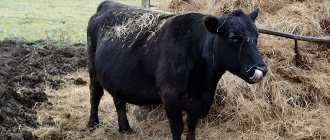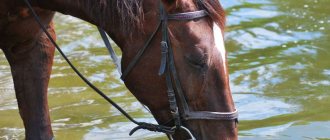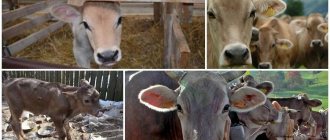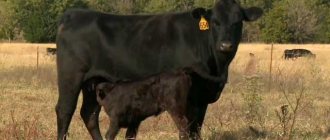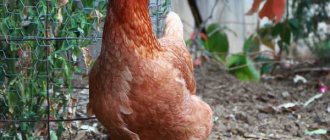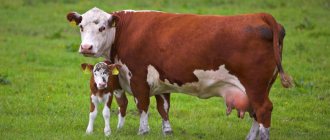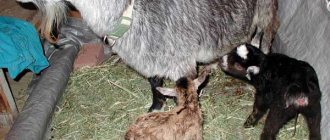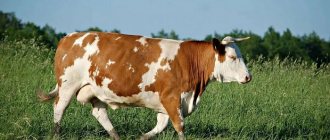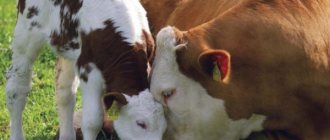published: 18. 12 . 2019
author: Vitaly Shibarshin
From this article you will learn:
- What are the main points of feeding cattle you need to know?
- What should be the standard diet for an adult dairy cow?
- How to properly feed pregnant dry cows and heifers
- What are the features of the diet of breeding bulls?
- What to feed cattle after calving
- What are the techniques and routines for feeding cattle?
- How to feed cattle in winter
- What are the nuances of feeding cattle during the grazing period?
A well-structured diet of cattle directly affects the growth of young animals and the increase in the weight of adults for meat, daily milk yield, reproductive functions and many other indicators. Of course, you can create the correct nutrition system for cattle on your own, based on the recommendations of more experienced specialists. After all, errors in the diet of cows lead to loss of profit for the farmer and frequent diseases of the livestock. Next, we will tell you how to properly feed cattle.
Cattle Feeding Basics
There are only two basic rules regarding the composition of cattle nutrition:
- The diet must include nutrients (vitamins, minerals), and it is important that they come in a form that is convenient for the animals to consume and easily digested.
- It is necessary to use the correct proportion of protein, minerals, vitamins. Only if the above feeding standards are met, cattle will receive all the nutrients, and the weight and age of each animal will be taken into account.
Errors in feeding cattle lead to animal weight loss, decreased productivity and reproduction, and increased susceptibility to disease. With excessively abundant nutrition in dairy breeds, a positive trend in milk yield is initially observed. However, this tendency is short-lived, after which reproduction is disrupted. As a result, the number of animals sharply decreases. This is why it is so important to remember the difference between overfeeding and underfeeding.
In the process of feeding, cattle need to receive mainly succulent types of food: beets, silage, potatoes. Not so long ago, the basis of cow nutrition was hay, but recently farm lands have expanded, and it has become possible to feed cattle more intelligently.
How to water a newborn calf
Proper dairy farming should not allow calves to drink under the uterus. A good dairy cow produces much more milk than a calf needs. The calf may either drink more than it can digest, which will cause diarrhea, or the calf will not suck the cow clean, causing her to soon begin to reduce her milk yield. If the calf is not allowed to suck out all the milk, but is supplemented with milk by hand, then it can easily happen that after the calf the cow begins to retain milk. If you first milk and then let the calf suckle, then, firstly, it is difficult to guess how much can be milked so that the calf has enough remaining milk, and, secondly, with this method, the thinnest milk will go to the owner, and the fattest , the last thing, the calf, which is unprofitable. Therefore, you need to stick to watering calves from a bucket or bucket. In the first days, the calves have to be somewhat accustomed to drinking milk, and not sucking a finger sticking out of the milk and offered by the mistress. This training can be achieved without difficulty. Then it is necessary to ensure that the calf receives milk either fresh, or warmed to the temperature of fresh milk, i.e. about 30 Reaumur. The calf does not drink cold milk well, but it is not good for him, and sometimes even harmful. This milk cools the insides and can cause digestive upset. Next, you need to take care of the cleanliness of the dishes into which the milk is poured. If the dishes are dirty and contain sour remnants of previously supplied milk, then the new milk also spoils, and the calf drinks with it dirt and bacteria nesting in the milk and other microorganisms that can cause intestinal disease. If a cow suffers from tuberculosis, the milk of such a cow, as it contains pathogenic bacteria, is certainly harmful. But it is not difficult to get rid of these bacteria. To do this, just boil the milk or, even better, heat it to just 56° Réaumur for 10 minutes. At this temperature, tuberculosis bacteria die, and such heated milk becomes completely harmless. Before giving it to the calf, it must be cooled to the temperature of fresh milk. It is better not to boil milk, i.e. do not bring the Réaumur to 80°, but only heat it to 56°. This is because when boiling, the digestibility of individual components decreases somewhat, but when heated to 66°, there is no decrease in digestibility.
Everything that has just been said is especially important for the owner to know when he feeds his calf not with whole milk, but with the reverse milk, especially if the return is received from a dairy, where a lot of foreign milk is delivered. There is no way to be sure that the skim milk does not contain tuberculosis bacteria or other harmful microorganisms.
Therefore, before soldering the calf, it is better to heat the milk as above and pasteurize it.
3-4 days after calving, the cow begins to produce not colostrum, but ordinary sweet milk. At this time, the calf can be given milk not from its mother, but from another cow or from a common tub - this will not make much difference, as long as the milk is healthy and warm. B. The first week you should feed the calf 5 times a day, in the second week 4 times, and from the third week you can switch to triple feeding, coinciding with milking of the cows.
Cattle feeding ration
When preparing the daily ration for feeding cattle, they take into account, first of all, their own capabilities. So, if a farm grows root crops, they can be used to form the animal’s nutritional base by adding hay and high-protein feed.
The following option would be good:
- corn silage – 50%;
- beets/other root vegetables – 8%;
- concentrated feed – 22%;
- hay – 20%.
1. Standard nutrition for an adult dairy cow weighing 500 kg, with a milk yield of 15-16 liters, and a milk fat content of 4% looks like this:
This table balances the intake of minerals, only phosphorus and calcium are not enough. To correct this, you can add 0.05 kg of tricalcium phosphate to the main diet.
2. Feeding pregnant dry cows and heifers.
The main objective of such cattle feeding is to obtain healthy, viable calves and maximum milk production after calving.
During the launch period, experts try not to unnecessarily reduce the amount of cattle feeding, as this may negatively affect the development of the fetus. The launch begins in such a way that the duration of the dry period is approximately 60 days, and for weakened ones - 70 days. When starting up, the main techniques are to reduce the frequency of milking and adjust feeding. So, first, three-time milking is replaced by two-time milking, after which they switch to single-time milking and then milk every other day.
But we note that in order to avoid mastitis, milking must be complete. If necessary, succulent, concentrated feed can be removed from the diet of highly productive cows and liquid intake can be limited by temporarily closing drinking bowls. In the summer, they usually stop grazing, replacing the green mass with roughage. It is also important that animals are tested for mastitis before release and treated if necessary.
Feeding standards for pregnant dry cows are drawn up taking into account their live weight and planned milk yield for the year.
Menu of dairy cattle according to the time of year
It should be noted that the main product in the diet of cows of any age category (except for newborn babies) is hay and green feed. All other products are just complementary foods.
Nutrition in the winter months
The basis of the winter menu for dairy cows is hay and straw. Silage, combined feed and root crops are used as feeding. Experts advise harvesting dry grass in large quantities starting in the summer, since the average individual should receive approximately 16 kg of this product daily. If it is not possible to prepare dry herbal products yourself, which is why you have to buy them, you need to carefully consider them. The hay should be dry, aromatic, and free of any unnecessary impurities.
Let's consider what the daily food intake for a dairy cow is in kilograms and how many feed units it makes up. One individual should receive in winter:
- 680 grams of salt (does not contain KE);
- 13 kg of dried bean shoots – 2.8 kg of KE;
- 105 grams of bone meal – 105 grams of KE;
- 18 kg of dry grass – 2.4 kg of KE;
- 470 grams of meat flour – 370 grams of KE;
- 2 kg of crushed oats – 2 kg of KE;
- 450 grams of sunflower cake – 550 grams of KE;
- 520 grams of bran – 420 grams of KE;
- 1 kg of crushed barley – 1 kg of KE.
Meals in the summer months
The menu of dairy cattle in the summer months differs significantly from the diet in winter. The basis of summer feed is green vegetation, containing all the necessary useful elements that help increase milk yield. But in any case, even highly productive individuals should be supplemented with concentrated feed in a volume of approximately 280 grams every day.
In addition, the summer diet may differ, due to the type of livestock kept:
- When kept in stalls, cows are not allowed to walk; they consume all feed directly in the barn, which requires a daily supply of freshly cut grass.
- When kept on pasture, the cattle consume the main food on the pasture, so the heifers do not have to be fed grass in the stall.
- With stall-pasture housing, it is in the barn that the cow should receive more than 60% of the diet, and the remaining 40% must be obtained during walking.
- With pasture-stall housing, the individual consumes approximately 65% of the feed during grazing, and in the barn the cow needs to be supplemented.
It is appropriate to keep cows, from which a significant amount of dairy products can be obtained, by grazing if there is sufficient grass available. Otherwise, you will still have to resort to the help of compound feed and silage feed.
In the hot months, the daily portion of Burenka consists of the following products:
- 680 grams of table salt – no feed units;
- 270 grams of blood meal - 170 grams of KE;
- 2200 grams of alfalfa (dried) – 100 grams of KE;
- 550 grams of sunflower meal – 650 grams of KE;
- 4500 grams of silage – 800 grams of KE;
- 510 grams of corn flour - 800 grams of KE;
- 3800 grams of carrots – 480 grams of KE;
- 1200 grams of bran – 810 grams of KE;
- 1800 grams of crushed grain – 1800 grams of KE.
What to feed cattle after calving
It is important to fully feed the cow after calving, slowly switching to normal nutrition for the milking period. Immediately after the calf is born, the animal is given warm boiled water and high-quality hay. After 12 hours, the hay can be supplemented with wheat bran, oatmeal or liquefied cake, 1 kg per cow. It is important to add succulent feed types to cattle diets gradually. As a result, the animal is transferred to normal nutrition only for 9-10 days.
Milking begins if the animal has no problems with the udder. Feeding cattle in this case occurs using the advance method: when 10 liters of milk are received from an individual, she needs to be given 15 kg of feed. Such increases are made after 10–15 days, and the advance is duplicated as milk yield increases. And this happens until the milk yield stops paying for the feed premium - then the cow is fed, like a dairy cow, in accordance with live weight.
It is important to feed the animal, taking into account the norms from the tables given. In this case, feed can be replaced with mixtures for cows and cows before and after calving. But it is important to understand that they cost more. Of course, veterinarians monitor the proper nutrition of cattle on large farms, but even on a smaller farm it is necessary to create on your own the best possible living conditions and, most importantly, nutrition.
What are the consequences of an incorrect diet for a dairy cow?
To prevent nutritional problems in animals, you need to accurately determine the concentration of energy and nutrients in the feed, and also decide what kind of response you want to get from the feed consumed. The diet for a dairy cow should contain only high-quality protein supplements.
Excess soluble protein fractions in the diet should be avoided, as this can have a negative effect on the animal's liver. This danger can be caused by:
corn silage containing nitrates;
grassy feed;
sunflower meal;
urea.
Proteins of more suitable quality are found in soybean feed, sweet lupine and rapeseed meal.
Bacterial protein is recognized as the most valuable. The rumen of a dairy cow can contain up to 4 kg of it, but the small amount of carbohydrates in the diet makes its synthesis difficult. As a result, the milk production of the animal may decrease. Therefore, it is very important to monitor the regular intake of the required amount of glucose by the dairy cow’s body.
If an animal does not receive enough sugar, starch or fiber, this can cause ruminal digestion problems. Since starch and fiber in this case are antagonists, the lack of the latter can cause an increase in the consumption of starch by the microflora.
Lately, granulated natural food has become very popular. With their help, you save significant financial resources, since you can very accurately calculate the required number of granules. This feed also significantly increases animal productivity. But you should not get carried away with eating granules, forgetting about other types of food.
Eating pellets alone, even in combination with roughage, can disrupt the functioning of the rumen. As a result, lactation will decrease and the fat content of milk will decrease. The best option is to use 50% granular additives, 50% silage and bulk feed in the diet for dairy cows.
The nutritional needs of a dairy animal must be fully covered by the diet, without causing overload of the gastrointestinal tract. Overfeeding livestock is dangerous for diseases such as acidosis or ketosis.
Techniques and routines for feeding cattle
The cattle feeding technique is selected in accordance with the housing system. So, if a free-stall method is used, cows can independently eat silage and roughage in the required volume. They will receive concentrated feed only during milking.
When keeping cattle in stalls, it is important to consider the frequency of feeding and the sequence of feed. The number of meals may vary depending on productivity.
Since large volumes of milk cause cattle to be milked more frequently, the animal requires more frequent feeding. Most often it happens two or three times, carried out at equal intervals of time.
When feeding cattle with silage, the following feeding sequence is necessary:
- Concentrates.
- Sugar beet.
- Roughage.
- Silage after milking.
Animals are given root vegetables clean and whole, without subjecting them to any further processing. The grains are ground, otherwise 1/4 to 1/3 of the product will be excreted in the feces undigested.
Remember that the daily routine plays a very important role in organizing the feeding of cattle and all work in the barnyard. In the table you see an approximate winter schedule.
But the daily routine must be adjusted to the conditions of keeping animals in a particular farm.
Where to buy high-quality premixes for the diet of a dairy cow
You can buy high-quality premixes and feed additives for all types of animals in Russia from the developer and.
"Vitasol" is reliable! Comfortable! Professionally! Currently, Vitasol JSC has modern production facilities and scientific potential that can satisfy the needs of any customer, from a person keeping a cat or dog at home, to the largest poultry farms and livestock complexes. Our company's scientific developments in the field of animal and bird nutrition have been repeatedly awarded with medals from the All-Russian Exhibition Center and are in high demand in practical animal husbandry. Our products contribute to: Improved digestion and absorption of feed. Increasing the fertility of animals. Increasing the safety of young animals. Increase weight gain by 10–15%. Reducing feed consumption per unit of production by 5–10%. Reducing animal morbidity. Increased safety of adult livestock by 4–8%. For advice, you can contact us by phone: +7(800)-707-28-52.
Feeding cattle in winter
During the cold season, the cost of milk increases for several reasons. First of all, because feeding cattle in the summer is much cheaper. It is worth remembering that cows become pregnant in winter, which means the amount of milk is reduced even more. Is it possible to compensate for natural grass cover and provide animals with a complete diet in winter?
When forming the diet of pregnant or calving cows, we must not forget about the volume of dry matter. Since winter nutrition is characterized by limited consumption of succulent food, the maximum amount of dry matter per hundred kilograms of animal weight should be three and a half kilograms.
Hint: If hay is available, a 500 kg cow needs to be fed 17.5 kg of food daily. If there is a lot of succulent food in her feeding scheme, you need to increase the amount of dry matter to 4 kg.
You can find out the feeding rate for cattle (for fattening, for example) during the stall period for a particular animal using an approximate diagram, where the calculation is based on one kilogram of products:
- roughage and grain feeds – 850 g of dry matter;
- root vegetables – 100 g;
- potatoes – 200 g;
- silage – 200 g;
- sugar beets – 220 g;
- cake – 900 g.
So, the diet of a cow of average live weight and fatness should contain up to 20 kg of silage and approximately 10 kg of roughage. When calculating the amount of succulent feed consumption, use the ratio of 11 kg of feed per 100 kg of female weight. Using the same principle, the required volume of hay is determined - up to 1.5 kg per 100 kg of animal weight.
When planning feeding cattle in cold weather, namely pregnant animals, it is important to take into account the amount of milk they produce:
- Fodder beet is an essential nutritional element for cows. For every kilogram of milk, the animal should receive a kilogram of beets, but no more than 40 kg per day, even if we have a highly productive individual.
- Another variety of beet, sugar beet, can be consumed by cows up to 15 kg per day. It is recommended to give about 5 kg at a time. This industrial crop helps to better assimilate the rest of the food. However, remember that it is introduced by gradually increasing consumption, starting from 2 kg.
- In winter feeding of cattle, high-quality hay, carrots, bran and cake must be used. It is important that the last two products are natural concentrates.
- It is important to take care of the supply of minerals and carotene. Remember that the cow’s body copes with excess minerals on its own, while carotene accumulates in the liver in the form of vitamin A.
It is possible to increase the fat content of milk in winter by introducing legume hay, sunflower meal, bran, cake, yeast and a larger volume of protein foods into the cattle diet.
Let's move on to the main mistakes made when feeding cattle during the stall period.
In winter, cows spend much more time in the pen, while livestock farmers often forget about the need for regular walking of the herd. But it is impossible to achieve quality nutrition without walking for three hours every day.
There are also a number of other mistakes made when organizing cattle feeding at this time of year:
- Too much concentrate consumption. It causes an increase in acidity levels and disruption of the microflora of the digestive system. Vitamins stop being absorbed, fermentation begins, and the animal gets sick.
- Refusal of vitamins in the form of preparations. This often happens if it was not possible to prepare the required amount of high-quality feed in advance. In this case, you need to contact a specialist and start using the medications prescribed by him.
- Twice feeding, violation of the regime, routine. The cow needs to receive hay or concentrates before milking. The time for roughage comes after silage, and straw is given at night. The first cattle feeding of the day involves hay. It is good to feed root vegetables with haylage or silage.
- A sharp change in the type of feeding for cattle. If, for example, you have 10 days' supply left, begin to gradually introduce the new food, mixing it with the old one. This will give the scar a chance to adjust.
What should a cow's nutrition be like to increase milk yield?
Highly productive dairy cows have an increased metabolism. In this regard, the content of metabolic energy of feed units in the dry matter of feed should be increased, which will allow regularly obtaining high milk yields. It is necessary to balance the diet in amino acid composition and microelements content. The volume of milk is influenced by several factors: 20–25% of its quantity depends on the availability of nutrients in the diet, 30% on the volume of protein, and 50% on its energy value.
It is possible to competently increase milk yield through the correct distribution of energy concentration in dry matter, and not through a thoughtless increase in the volume of feed. The milk production of each animal increases 3.5 times if the energy value is doubled.
For example, if milk yield increases per day from 20 to 40 kg, it is necessary to increase the rate of essential amino acids (lysine, methionine and tryptophan) by one and a half times. At the same time, in the diet for dairy cows it is necessary to change the ratio of feed groups, increasing the amount of root crops and compound feed.
The feeding ration of dairy cows depends on the following factors:
From age: since more nutrients are needed for the rapid growth of an animal, the amount of food for young animals should be 10% more than for animals of other age categories.
From weight: an animal with underweight should be provided with more intensive feeding, at the rate of 0.5 feed unit per 1 kg of desired growth.
From weather conditions and maintenance: it is necessary to increase the amount of feed by 10% if the cattle are kept in poor conditions or in winter.
There are several phases of lactation in a dairy cow. During the first four months after calving, maximum lactation is observed. During this period, the daily milk intake increases. During the milking period, it is necessary to increase the amount of feed, composing it in the following ratio:
hay – 10% of nutritional value;
haylage – 14%;
silage – 19%;
root vegetables – 12%;
additives of concentrates – 45%.
Some livestock breeders, in the old fashioned way, feed the cow with bread instead of concentrates before milking, which allows you to quickly increase the amount of milk during milking. There are other recipes that help increase milk yield, for example, bran porridge: brew 3 kg of bran with boiling water, wait 30 minutes, beat the mixture thoroughly and add salt, steamed flaxseed and half a glass of dill tincture. Give the resulting mass to the dairy cow in the morning. After 10 days, when there is more milk, you need to slowly remove the mixture from the diet.
Feeding cattle during the grazing period
In summer, dairy cows eat mainly green feed. During the day, an animal, depending on productivity, can consume 50–80 kg or more.
As with any food, the transition to a new type of feeding should not be abrupt: experts recommend spending 10–12 days on this. After all, cows will now receive a smaller proportion of dry matter (15%). Note that the dry matter in the grass is rich in protein (up to 25%), half of which is non-protein fractions, it also has a low fiber content (16-17%), sugar, calcium, magnesium and a very high proportion of potassium.
With a sharp transition to a new type of feeding, cattle may develop diarrhea, pasture tetany and tympany, and milk yield and milk fat content may decrease. Before grazing, it is important to give cows additional hay, haylage, and silage. The first grazing of the season should last no more than two hours. Then this time is increased, and the amount of winter feed consumed by the animals, on the contrary, is reduced.
Let us repeat that green mass becomes the basis for feeding cattle in the summer. But it is important to remember: feeding at this time can be either pasture or stall feeding. It is possible to achieve increased rates of food consumption, animal productivity, and a reduction in the consumption of concentrates by combining several types of bulk feeds in the diet. As studies show, often the productivity of cows on pasture per unit area is not as high as when kept in stalls. After all, if we do not provide additional carbohydrates, animals receive excess protein and little energy on pasture.
Therefore, paddock grazing with portioned grazing of the paddocks is considered the most productive; this is done using an electric fence. They graze in the pen for 3-4 days, and the animals re-enter the pen after 25-30 days. Thanks to this system, helminthic diseases can be avoided.
On productive cultivated pastures, cows graze for 10–12 hours. One individual needs approximately 0.5 hectares of such pasture. It is worth noting that it is important to provide animals on pasture with water and table salt. It is also recommended to be careful with clover pastures - you need to slowly accustom them to them, and do not let animals go onto wet clover, because this causes tympany.
If there is not enough greenery on the pastures, green conveyor crops are additionally given. This feeding is considered mandatory for highly productive cows. It is important that the green mass is mowed before distribution, since after 3-4 hours of storage in the air in heaps, the fertilizer warms up, loses its beneficial properties, and can even provoke digestive problems.
Let's summarize about feeding cattle, based on information from specialized literature and cattle breeding practice:
- Proper pasture feeding can provide milk yields equal to, or even slightly greater than, those kept indoors.
- The proportion of dry matter consumed on pasture and indoors is almost the same.
- On pasture, dairy cows receive feed of higher digestibility.
- With good grass cover, approximately 70–80% of it is used.
- When feeding green mass, it is important to provide animals with easily digestible carbohydrates, crude fiber, and crude fat.
- Pasture feeds are not able to provide highly productive animals with the necessary energy, phosphorus, microelements and, in some cases, fiber.
- Due to an unbalanced diet, feed consumption increases by 10–20% in terms of nutritional value and dry matter per unit of production.
- During the summer, when cattle eat green food, it is important to analyze all feed at least three times.
- Animal nutrition must be balanced in all respects. In this case, it is important to take into account the required productivity, information regarding the analysis of feed and cattle blood.
- You need to find a company that will prepare and supply you with a high-quality feed additive that meets your needs.
- It is possible to simplify the optimization of cattle feeding using computer programs that include a modern unit for calculating the required proportion of feed components.
- Recommended reading:
- Breeding cows as a business: is it possible for a beginning farmer to succeed?
- Feeding calves up to 6 months: features of creating the right diet
- Supplements for growth of calves: the most effective and useful
Tips for creating a balanced diet for a dairy cow
In order to create a diet for a dairy cow, it is necessary to take into account the following parameters: the quality of the milk obtained, the level of milk yield, the average weight of one animal, the general condition of the animal, lactation age, pregnancy period and ambient temperature.
A careful analysis of rough bulky feeds will help balance the diet. After this, it is necessary to determine the norms for nutrient requirements. This is done based on the standards established for dry matter. It is also important to audit the current feeding system. It is necessary to study the production groups of cattle, establish the availability of feed and its range, and identify the level of dry matter content in the feed. For animals, analysis of milk quality and average milk yield by group will be required, and it is also important to evaluate lameness, rumination and faeces.
It is necessary to replace all missing components of the diet and make sure that the animal has free access to food and eats the entire amount. During the day, 11-12 approaches to the feeder can be made, each lasting about half an hour. In one approach, about 10% of the daily requirement of dry matter is absorbed, so it is necessary to provide animals with 15-16 hours of light time so that they can receive the required amount of dry matter per day.
A healthy rumen and sufficient supply of structurally effective fiber to the animal
A healthy, functioning rumen is the basis of nutrition for ruminants. The goal is stable conditions for rumen microorganisms, the necessary separation of rumen contents and the flow of fermentation acids, microbes and remaining feed components from the proventriculus into the small intestine.
Mistakes can lead to excessive rumen acidity/rumen acidosis. In particular, subclinical rumen acidosis is widespread, which occurs as a result of reduced feed intake, but also due to lower feed conversion and a lack of vitamins that are produced in the rumen by bacteria found there (B vitamins!).
Rumen-friendly feeding can be achieved both through feeding technology and through diet formulation.
The goal of good feeding technology is to have both good and even mixing to prevent selection and provide the required feed structure. This also includes the distribution of additional concentrated feed throughout the day.
When preparing a diet, two points are crucial: the structure of the feed and the proportion and composition of carbohydrates.
Structurally effective fiber comes from your own roughage, such as grass and corn silage, hay and straw. They provide chewing and salivation. Saliva acts as a buffer and influences the pH value in the rumen, which should ideally be above 6.15. A large amount of easily digestible, rumen-degradable carbohydrates (sugar and starch) leads to a drop in pH to a critical range with the risk of acidosis.
We define groups based on similar characteristics
For the subsequent slaughter of animals, not only specially bred breeds (Hereford, Simmental, Charolais and others) are prepared for meat. It happens that dairy cows also suffer such a sad fate. After all, not a single animal is immune from diseases, as a result of which the cow becomes barren. There are also congenital defects of reproductive or other organs.
As for bulls, there are usually few sires in the herd. All other male animals are slaughtered before maturity or castrated, whether they are dairy or meat animals.
If there are many animals on the farm, then the first thing to do is to divide them into groups with similar data on weight, breed, sex and age. The feeding technology for each of them will be different. And, of course, consumption rates will be different, because a calf cannot eat as many kilograms as its mother or another adult cow.
Feed classification
All food is divided into several types, depending on their origin. They are:
- vegetable;
- synthesized;
- feed;
- vitamins;
- mineral.
Each of these varieties saturates the animal’s body with a certain amount of energy. To avoid confusion regarding nutritional value, 1 kg of medium-quality oats is taken as the main feed unit (FU). Taking into account these standards, feed comes in bulk, containing 0.6 kg of KE, which can be processed in the cow’s body. Concentrates have a higher KE.
Cows eat mainly plant foods, which are:
- juicy;
- rude;
- concentrated.
Fortified supplements, synthesized using special technologies, help replenish the missing beneficial elements in the body of cows. In addition, they are used when it is necessary to preserve livestock in certain situations. It is useful to give such supplements to animals during pregnancy, during exhaustion, as well as to young animals. Compound feeds are produced from plant components.
When compiling a diet for cows, you need to consider some points:
- level of fat content of dairy products;
- volume of actual and desired milk production (measured in kg/day);
- it is necessary to take into account the lactation period;
- The portion is calculated as follows: 1 KE per 100 kg of individual body weight.
Daily requirement
All rules for formulating a diet are based on the daily requirement of the cow’s body for certain microelements and vitamins. It should be remembered that this figure depends on the productivity of the animal. The more milk an animal gives, the more nutrients and vitamins it needs. If the diet does not meet the animal’s needs, it will lead to a decrease in milk production and the body’s protective functions.
This article will tell you about keeping cows at home.
In vitamins
Vitamins play a regulatory role in the animal's body. Their lack leads to a decrease in appetite and, as a consequence, to a drop in milk yield. For dairy cows, the most important is vitamin A, which requires at least 50-70 mg per day. Vitamin C is important to improve overall health, up to 60 mg per day. Among the B vitamins, B1 plays the most important role; it should be included in the diet in an amount of 30-40 mg per day. To improve performance, the vitamin complex should include up to 300-500 mg of vitamin E.
In trace elements
It is impossible to calculate the exact amount of certain microelements in food . For this reason, when creating a diet, you need to add a constant amount of these substances to it. This will provide the cow with everything necessary for healthy milking and will not lead to an overabundance of these components. The following should be added to the general daily menu of a dairy cow:
- 2 grams of magnesium;
- 6 grams of calcium;
- 4 grams of phosphorus;
- 5 grams sodium.
This amount is necessary to satisfy the daily needs of the cow’s body in microelements.
